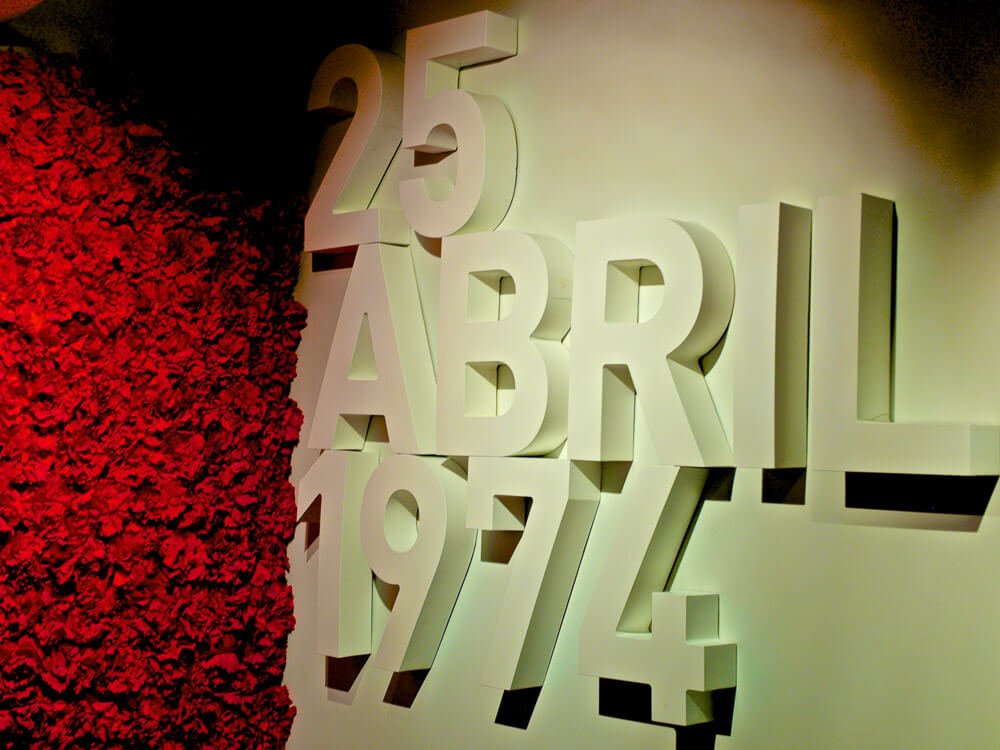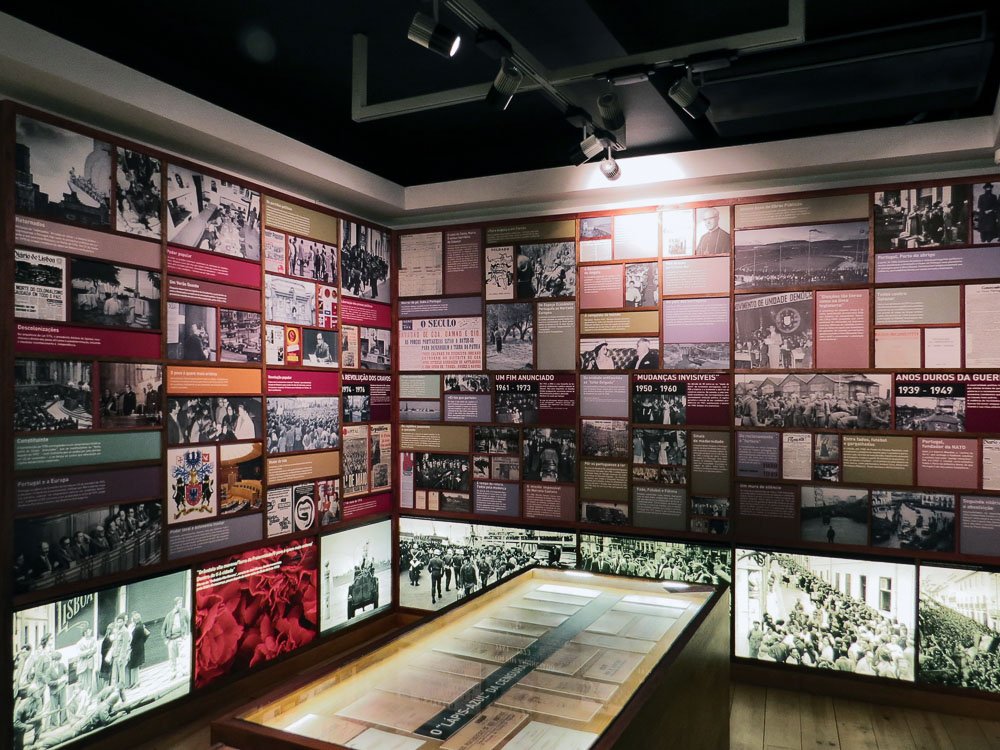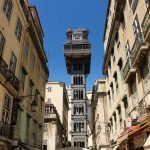The Ajube Museum in Lisbon is an essential stop for those who want to understand more about the country’s fight for freedom against the dictatorship. Here’s everything you need to know before visiting it!
Located in the center of Lisbon, in front of the cathedral, the Aljube Museum of Resistance, or simply Museu do Aljube, is dedicated to the history of the resistance against the Portuguese dictatorship.
It may not be an easy visit, but it’s certainly an important one. It’s not only a place to learn and reflect about Portugal’s history, but it’s also a way to preserve the memory of what happened and serve as a tribute to those who lost their lives fighting for freedom.
That’s why, in my opinion, this is probably one of the most important museums in Lisbon, and I highly recommend paying it a visit. So, join me as I guide you through everything there is to know about Aljube Museum before visiting it!
Aljube Museum of Resistance in a nutshell
- Highlights: Collection of period artifacts, photographs, original newsreel and radio broadcasts.
- Opening hours: Tuesday to Sunday, 10am to 6pm
- Best time to visit: Morning
- Tickets/price: € 3
- Recommended duration of visit: 2h
- Address: Rua de Augusto Rosa, 42, 1100 – 059 Lisboa
- Nearest station: Terreiro do Paço
Index
- Overview
- Points of interest
- Why visit Museu do Aljube
- How to get tickets
- Location and how to get there
- Opening hours and best time to visit
- How long does it take to visit
- Nearby attractions

1. Overview
The Aljube Museum is located in a historic building that dates back to the Moorish era. Its name means “dry well” as well as “prison”, a role which it has almost always fulfilled: first, it served as an ecclesiastical jail, became a women’s detention center in the 19th century, and then served as a political prison from 1928 to 1965.
It was there that prisoners were confined, interrogated and tortured by the fascist dictatorship that ruled Portugal for 48 years. In 2015, the building was repurposed into a museum and memorial to those who fought for freedom and democracy.
Museu do Aljube now showcases exhibitions that provide insight into this part of the country’s history, highlighting the fight against dictatorship, past struggles against authoritarianism and the liberation of colonies, as well as temporary displays related to resistance and the fight for human rights.
2. Points of interest
The Museu do Aljube, adapted by architects Manuel Graça Dias and Egas José Vieira, spans across 5 floors, showcasing exhibitions that highlight the fight against dictatorship, past struggles against authoritarianism and the liberation of colonies.
The first two floors (-1 and 0) display archaeological remains that provide context for the subsequent exhibits. This is also where you’ll find temporary exhibitions that offer various takes on resistance and freedom.
On Floor 1, there is an exhibit detailing Portugal’s political history from 1890 to 1976, covering both the emergence and decline of fascism in the nation. It provides a look at censorship in art, as well as other forms of state-led repression, such as police actions and legal proceedings against opposition.
Floor 2 presents stories of anti-fascist resistance, from lawful protests to secret activities. It presents the stages that followed an arrest, and the prisons and concentration camps the prisoners were sent to. The display includes photographs, testimonies, and restored prison cells, giving visitors a sense of the horrors faced during the imprisonment.
Floor 3 delves into colonialism’s role in Portuguese society and its involvement in the Colonial War in Africa. There’s also a section that pays homage to the victims of oppressive policies during this time period.
After exploring these narratives, you can go up to Floor 4 where a café offers a place for unwinding and contemplation with beautiful views over Lisbon.

3. Why visit Museu do Aljube?
The Museu do Aljube may be a challenging place to visit, but it’s an important experience that allows for a lot of reflection while giving both tourists and locals the opportunity to understand and value today’s freedom.
It uses personal accounts, documents and multimedia presentations to provide an insightful look into Portugal’s history under an authoritarian rule and emphasize the importance of remembering history to avoid repeating past errors.
The museum acts as an educational center, connecting information with awareness and showing how collective efforts can initiate change. That’s why I think it’s an absolute must-visit museum, especially for those interested in learning more about contemporary history, resistance, and the fight for human rights, which are lessons that are still very much relevant in today’s world.
4. How to get tickets?
The best option to get tickets for the Aljube Museum is through their official website. However, if needed, you can also buy your ticket directly at the museum’s box office.
Prices range from € 1.50 to € 3, and children under 12 can enter for free. Besides that, Lisbon residents also have free access on Sundays and holidays until 2pm.

5. Location and how to get there
The Museu do Aljube is very easy to find and reach, as it’s situated right opposite the Lisbon Cathedral. Trams 12, 28 and bus 737 stop close to the museum, and there are parking spaces nearby if you plan on driving.
The nearest metro stations are Terreiro do Paço and Baixa-Chiado, both a brief walk away. Terreiro do Paço station connects via the Blue Line, while Baixa-Chiado serves both the Blue and Green Lines, offering access from different areas of Lisbon.
6. Opening hours and best time to visit
The Museu do Aljube is open to the public from 10am to 6pm every day, except for Mondays and on specific holidays (January 1st, May 1st and Christmas). Keep in mind that the last entry is at 5:30pm.
Personally, I’d recommend visiting the museum in the morning, as there are generally fewer visitors during this time, making it more suitable for a reflective and quiet visit. But no matter when you visit, you probably won’t encounter too many tourists nor very long lines, since this museum isn’t as well-known as others in the city.

7. How long does it take to visit?
It depends on what you want out of your visit. If you’re looking for a basic overview, focused on the main exhibits related to Portugal, I’d recommend spending 1 hour at the Museu do Aljube.
However, for a more in-depth experience, you should set aside around 2 hours. This way, you’ll be able to have a better grasp of the context surrounding the displays, read the historical accounts and listen to personal stories, as well as visit the temporary exhibitions.
8. Nearby Attractions
Right across from the Aljube Museum is the Sé de Lisboa, or Lisbon Cathedral, a must-visit during any trip. Its foundation goes back to 1147 and it showcases different architectural styles like Romantic and Gothic. Next door is Igreja de Santo António, believed to be built where Saint Anthony was born.
There’s also the Praça do Comércio, a large square by the river that has been an important site for Portuguese trade since it was rebuilt after the 1755 earthquake, and the Arco da Rua Augusta, a beautiful example of neoclassical architecture with views over Lisbon.
Other attractions near Museu do Aljube include Casa dos Bicos, which holds the José Saramago Foundation and has a beautiful stone façade, and the ruins of the Roman amphitheater and its museum.
Ready to learn about Portugal’s past?

The Aljube Museum is a key destination for those looking to understand Portugal’s history, as it presents the country’s past under dictatorship and the fight for freedom in a way that respects those who stood up for democracy.
The museum serves not only to share knowledge but also to remember those who resisted oppression, providing insights into events that have shaped present-day Portugal and addressing difficult truths with the aim of educating visitors so that history doesn’t repeat itself.
A visit to Museu do Aljube may be tough because of its direct portrayal of an oppressive period, but that’s precisely why it’s so crucial. It’s a way to understand the events that have shaped present-day Portugal and its ongoing commitment to justice and human rights, as well as to deepen our appreciation for the progress achieved so far.







